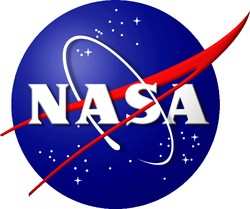Sun, Apr 14, 2013
Planet-Hunting Satellite, Space Station Instruments To Be Developed For 2017 Launch
NASA's Astrophysics Explorer Program has selected two missions for launch in 2017: a planet-hunting satellite and an International Space Station instrument to observe X-rays from stars.

The Transiting Exoplanet Survey Satellite (TESS) and Neutron Star Interior Composition Explorer (NICER) were among four concept studies submitted in September 2012. NASA determined these two offer the best scientific value and most feasible development plans. TESS will use an array of telescopes to perform an all-sky survey to discover transiting exoplanets ranging from Earth-sized to gas giants, in orbit around the nearest and brightest stars in the sky. Its goal is to identify terrestrial planets in the habitable zones of nearby stars. Its principal investigator is George Ricker of the Massachusetts Institute of Technology in Cambridge, MA.
NICER will be mounted on the space station and measure the variability of cosmic X-ray sources, a process called X-ray timing, to explore the exotic states of matter within neutron stars and reveal their interior and surface compositions. The principal investigator is Keith Gendreau of NASA's Goddard Space Flight Center in Greenbelt, MD.
"The Explorer Program has a long and stellar history of deploying truly innovative missions to study some of the most exciting questions in space science," said John Grunsfeld, NASA's associate administrator for science in Washington. "With these missions we will learn about the most extreme states of matter by studying neutron stars and we will identify many nearby star systems with rocky planets in the habitable zone for further study by telescopes such as the James Webb Space Telescope."
NASA's Explorer program is the agency's oldest continuous program and is designed to provide frequent, low-cost access to space using principal investigator-led space science investigations relevant to the Science Mission Directorate’s astrophysics and heliophysics programs. Satellite mission costs are capped at $200 million and space station mission costs are capped at $55 million.
The program has launched more than 90 missions. It began in 1958 with the Explorer 1, which discovered the Earth’s radiation belts. Another Explorer mission, the Cosmic Background Explorer, led to a Nobel prize.
More News
Also: New Lakeland Fly-in!, Gleim's DPE, MOSAIC! Nearly three-quarters of a century in the making, EAA is excited about the future… especially with the potential of a MOSAIC>[...]
Estimated (EST) -When used in NOTAMs “EST” is a contraction that is used by the issuing authority only when the condition is expected to return to service prior to the >[...]
Aero Linx: Regional Airline Association (RAA) Regional airlines provide critical links connecting communities throughout North America to the national and international air transpo>[...]
The Airplane Broke Up In Flight And Descended To The Ground. The Debris Path Extended For About 1,435 Ft. Analysis: The pilot, who was the owner and builder of the experimental, am>[...]
From 2015 (YouTube version): History Comes Alive Thanks to A Magnificent CAF Effort The story of the Douglas C-47 named, “That’s all Brother,” is fascinating from>[...]
 Airborne 07.21.25: Nighthawk!, Hartzell Expands, Deltahawk 350HP!
Airborne 07.21.25: Nighthawk!, Hartzell Expands, Deltahawk 350HP! ANN's Daily Aero-Term (07.27.25): Estimated (EST)
ANN's Daily Aero-Term (07.27.25): Estimated (EST) ANN's Daily Aero-Linx (07.27.25)
ANN's Daily Aero-Linx (07.27.25) NTSB Final Report: Luce Buttercup
NTSB Final Report: Luce Buttercup Classic Aero-TV: 'That's All Brother'-Restoring a True Piece of Military History
Classic Aero-TV: 'That's All Brother'-Restoring a True Piece of Military History



